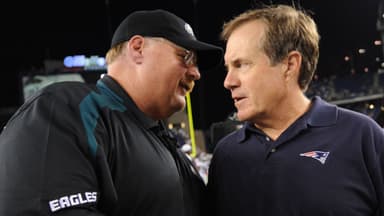When Russell Wilson entered the NFL in 2012, he looked like the era-defining quarterback of his generation, set to join the Bradys, Rodgers, and Mannings of the world. After all, he was a third-round pick who defied the odds and silenced every doubt about his size by quickly transforming the Seattle Seahawks into perennial contenders.
Advertisement
By Wilson’s third season, he had already led the franchise to back-to-back Super Bowl appearances, winning one. He nearly claimed a second, if not for Malcolm Butler’s infamous goal-line interception.
What made the QB stand out was the unique blend of traits he brought to the table. Wilson wasn’t just a passer; he was the league’s most dynamic dual-threat quarterback before Lamar Jackson made his debut.
His 2014 season, when he rushed for 849 yards and seven touchdowns, epitomizes just how dangerous he was outside the pocket. Combine that with his ability to throw the best “rainbow ball” in football, and Wilson seemed destined for a Hall of Fame trajectory. But somewhere along the way, the magic began to fade.
Since leaving Seattle in 2022, Wilson’s career has been marked by inconsistency, criticism, and a visible decline in his physical weapons. Colin Cowherd captured this fall from grace perfectly, as he called Wilson’s decline one of the most abrupt he’s ever seen in the NFL.
“I don’t think there’s ever been a player that has eroded as quickly as Russell Wilson,” the analyst said on his podcast.
The decline was especially evident in his two years at Denver (2022-23), where he posted the worst seasons of his career in terms of EPA while recording a career-low passer rating of 84.4.
“I mean, I was Team Russ, and I knew he wasn’t great from the pocket, but he threw the best rainbow ball, he was elusive, and then all of a sudden, he goes to Denver, he got slower, thicker, kind of disconnected from reality,” Cowherd added.
And while Russ showed signs of revival in Pittsburgh last year (2,482 yards and 16 TDs), it wasn’t enough. As he enters his first season with the New York Giants, the conversation surrounding him is now less about potential greatness and more about how much he has left in the tank.
Cowherd pointed out that Wilson’s struggles aren’t just about stats or missed throws. They reflect a deeper disconnect.
“I don’t remember ever in my lifetime a quarterback in two different environments being criticized by teammates and turning off a legendary head coach quickly. Like, I don’t even know what to make of Russ’s career. I don’t even have a comp for it in the NFL,” said Cowherd. Unfortunately for the quarterback’s fans, the numbers do substantiate this sense of erosion.
View this post on Instagram
Wilson, once among the NFL’s most efficient deep passers, now leads the league in checkdown rates. He logged a staggering 19.2% in 2024, compared to just 5.8% during his final two seasons in Seattle.
Russ’ mobility has vanished, too, with designed runs and scramble yardage cratering since 2019. Even his stints under offensive minds like Sean Payton and Arthur Smith failed to spark a turnaround, with Wilson struggling to adapt to system-driven schemes.
By the end of his Steelers tenure last year, he was more known for late-season collapses than for his trademark fourth-quarter heroics. Simply put, Wilson is now far more static in the pocket.
Wilson, 36, finds himself in New York, officially named the Giants’ starter by Brian Daboll. On paper, Daboll’s simplified system could offer him one last chance to regain form. But for many, including Cowherd, the conversation has already shifted to how stunningly fast he fell.







